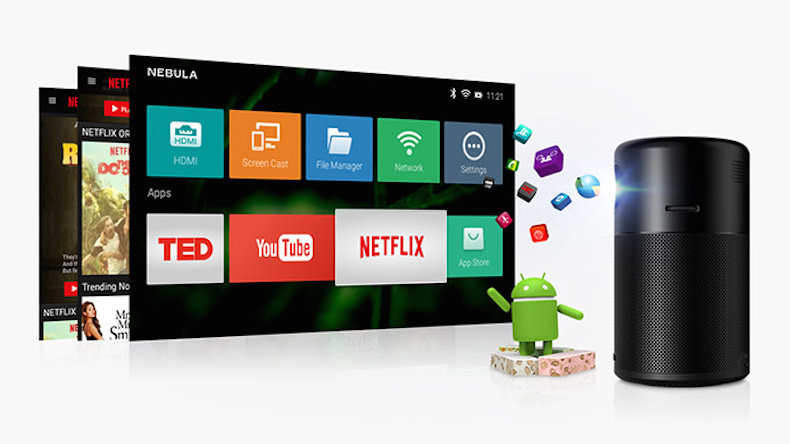Anker's new portable projector has can-do attitude. Because it's a can
The Capsule is currently being funded on Indiegogo - it offers wifi connectivity, Android 7.0 Nougat operating system and 360-degree sound

The first tin can was invented by Frenchman Philippe de Girard, and patented in 1810. But now, 207 years later, canned goods have reached their pinnacle: cinema in a can.
Called the 'Nebula Capsule', and currently being funded on Indiegogo, this piece of kit is a 12cm tall projector that can output a 854x480 resolution image - although with recorded brightness of only 100 lumens, you'll probably need to turn off a lot of lights to get the full experience.
On the inside, the Nebula Capsule runs Android 7.0 Nougat, so will be able to stream Netflix, YouTube and BBC iPlayer as well as every other app on Google's Play store - as long as you don't exceed its 8GB internal memory. It also has AirPlay, Miracast and wifi connectivity as well as an HDMI 1.4 port.
Sound-wise, it acts as a 5W 360-degree speaker with Bluetooth 4.0 support - so you can stream your music to it (and hopefully it won't sound too tinny! Do you see what we did there?)
Battery life clocks in at a claimed 2.5 hours of continuous video or 40 hours of non-stop music, so while you can't use it for a Lord of the Rings marathon it should last you through most movies.
The soda-sized projector comes from Anker, the company behind the Zolo Liberty+ wireless headphones - which proved very popular to the crowdfunding market.
So far the Nebula Capsule has raised $256,563 - over 500 percent of its intended goal. You can back it now for $269 (approximately £200) plus shipping.
Get the What Hi-Fi? Newsletter
The latest hi-fi, home cinema and tech news, reviews, buying advice and deals, direct to your inbox.
MORE:
November 2017 issue on sale now!
New Amazon Fire TV supports 4K HDR video and Dolby Atmos
Sennheiser's stethoscope headphones make hearing TV easier
Roku to rival Google Chromecast Ultra with 4K HDR streaming stick?
Adam was a staff writer for What Hi-Fi?, reviewing consumer gadgets for online and print publication, as well as researching and producing features and advice pieces on new technology in the hi-fi industry. He has since worked for PC Mag as a contributing editor and is now a science and technology reporter for The Independent.
